LOCATION COUNT
A pictorial look at where Bram Stoker wrote Dracula. Some of the places that inspired him and locations where he set scenes. Bram Stoker never visited Transylvania, but from 1894 he did holiday in Aberdeenshire on the eastern coast of Scotland, staying mostly at the Kilmarnock Arms Hotel in Cruden Bay. The first picture is the hotel in Stoker's time. Nothing much has changed.
Bram Stoker never visited Transylvania, but from 1894 he did holiday in Aberdeenshire on the eastern coast of Scotland, staying mostly at the Kilmarnock Arms Hotel in Cruden Bay. The first picture is the hotel in Stoker's time. Nothing much has changed.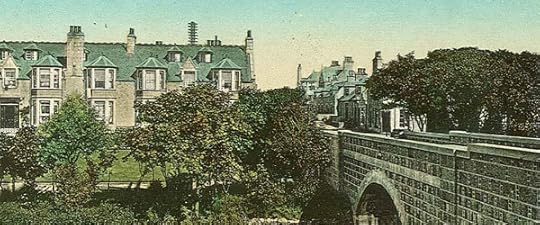
 Isolated and windswept, Slains Castle stands on the headland above the village and Stoker was a guest here, following in the literary footsteps of Johnson and Boswell who stayed at the castle in 1773.
Isolated and windswept, Slains Castle stands on the headland above the village and Stoker was a guest here, following in the literary footsteps of Johnson and Boswell who stayed at the castle in 1773.
 Begun in 1597, the place is a curious hotchpotch of periods, the final 1837 remodelling being in the Scottish Baronial style. Slains was the inspiration for the Count’s castle at the head of the Borgo Pass, and Cruden Bay today’s residents refer to it as Castle Dracula. Now a romantic clifftop ruin, with many stone chambers and passageways to explore, it’s well worth a visit.
Begun in 1597, the place is a curious hotchpotch of periods, the final 1837 remodelling being in the Scottish Baronial style. Slains was the inspiration for the Count’s castle at the head of the Borgo Pass, and Cruden Bay today’s residents refer to it as Castle Dracula. Now a romantic clifftop ruin, with many stone chambers and passageways to explore, it’s well worth a visit. Whitby was the setting for many scenes in Dracula and Stoker first visited the small Yorkshire fishing town in 1890. He stayed for several weeks on the West Cliff’s Royal Crescent at number 6, a guesthouse run by Mrs. Emma Veazey. This is the cream-coloured house in the second picture. A plaque is now fixed to the wall and the place has been named Bram's View. The current owner lets out his rooms as a holiday flat.
Whitby was the setting for many scenes in Dracula and Stoker first visited the small Yorkshire fishing town in 1890. He stayed for several weeks on the West Cliff’s Royal Crescent at number 6, a guesthouse run by Mrs. Emma Veazey. This is the cream-coloured house in the second picture. A plaque is now fixed to the wall and the place has been named Bram's View. The current owner lets out his rooms as a holiday flat.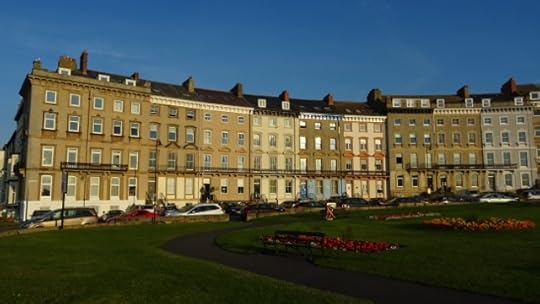
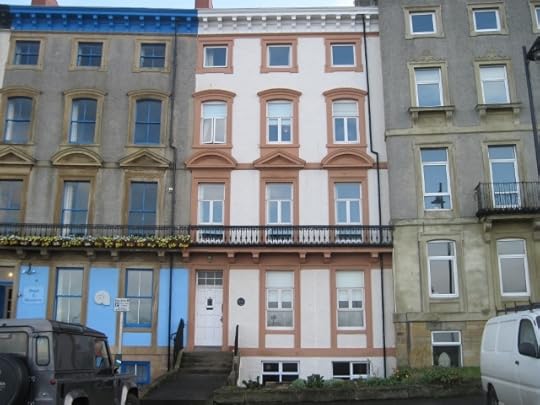
 This was the first of many visits to research and write Dracula. Three ladies from Hertford were fellow guests, Isabel and Marjorie Smith and their friend Miss Stokes, and many claim Stoker based the characters of Lucy, Mina, and Mrs Westenra on them. In the novel, these three characters also stay on the Crescent and Lucy’s bedroom is visited by a huge bat.Stoker carried out much of his research into East European folklore at Whitby library. He borrowed a 1820 book from here by William Wilkinson entitled: An Account of the Principalities of Wallachia and Moldavia. This is very probably where he first came across the name Dracula. A bench overlooks Whitby harbour where he would sit to write up his library notes and the view hasn’t changed since those Victorian days. The old postcard shows how it looked in his day, and the seat is now fitted with a commemorative plaque.
This was the first of many visits to research and write Dracula. Three ladies from Hertford were fellow guests, Isabel and Marjorie Smith and their friend Miss Stokes, and many claim Stoker based the characters of Lucy, Mina, and Mrs Westenra on them. In the novel, these three characters also stay on the Crescent and Lucy’s bedroom is visited by a huge bat.Stoker carried out much of his research into East European folklore at Whitby library. He borrowed a 1820 book from here by William Wilkinson entitled: An Account of the Principalities of Wallachia and Moldavia. This is very probably where he first came across the name Dracula. A bench overlooks Whitby harbour where he would sit to write up his library notes and the view hasn’t changed since those Victorian days. The old postcard shows how it looked in his day, and the seat is now fitted with a commemorative plaque.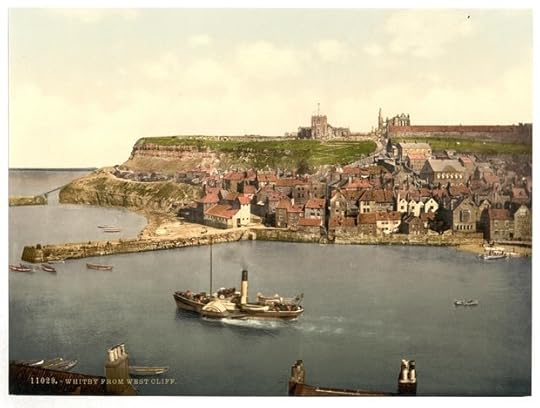
 In the library he also read the Whitby Gazette report from 1885 about the Russian schooner Dmitri of Navra which came into the harbour during a storm and was wrecked on the small beach called Tate Hill Sands. Stoker uses this story as Dracula’s arrival, changing the Dmitri from Navra to the Demeter from Varna. The following picture is by the famed Whitby photographer Frank Meadow Sutcliffe (Stoker bought a copy) and the next shot shows the same spot today. Again, very little has changed.
In the library he also read the Whitby Gazette report from 1885 about the Russian schooner Dmitri of Navra which came into the harbour during a storm and was wrecked on the small beach called Tate Hill Sands. Stoker uses this story as Dracula’s arrival, changing the Dmitri from Navra to the Demeter from Varna. The following picture is by the famed Whitby photographer Frank Meadow Sutcliffe (Stoker bought a copy) and the next shot shows the same spot today. Again, very little has changed.
 Stoker also heard many local legends which he wove into his story. One of these was the Barghest, a huge phantom hound with red eyes that haunts the North Yorkshire moors and cliffs around the fishing town. This was the inspiration for Dracula’s appearance as a large black dog which leaps from the Demeter and bounds up the famous 199 steps to St. Mary’s churchyard.
Stoker also heard many local legends which he wove into his story. One of these was the Barghest, a huge phantom hound with red eyes that haunts the North Yorkshire moors and cliffs around the fishing town. This was the inspiration for Dracula’s appearance as a large black dog which leaps from the Demeter and bounds up the famous 199 steps to St. Mary’s churchyard.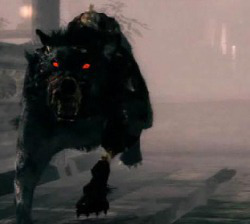 The book was published in 1897 and fans have been visiting these locations ever since, especially Whitby where the Goth weekends are now famous, or infamous, depending upon your point of view.
The book was published in 1897 and fans have been visiting these locations ever since, especially Whitby where the Goth weekends are now famous, or infamous, depending upon your point of view.
 Bram Stoker never visited Transylvania, but from 1894 he did holiday in Aberdeenshire on the eastern coast of Scotland, staying mostly at the Kilmarnock Arms Hotel in Cruden Bay. The first picture is the hotel in Stoker's time. Nothing much has changed.
Bram Stoker never visited Transylvania, but from 1894 he did holiday in Aberdeenshire on the eastern coast of Scotland, staying mostly at the Kilmarnock Arms Hotel in Cruden Bay. The first picture is the hotel in Stoker's time. Nothing much has changed.
 Isolated and windswept, Slains Castle stands on the headland above the village and Stoker was a guest here, following in the literary footsteps of Johnson and Boswell who stayed at the castle in 1773.
Isolated and windswept, Slains Castle stands on the headland above the village and Stoker was a guest here, following in the literary footsteps of Johnson and Boswell who stayed at the castle in 1773.
 Begun in 1597, the place is a curious hotchpotch of periods, the final 1837 remodelling being in the Scottish Baronial style. Slains was the inspiration for the Count’s castle at the head of the Borgo Pass, and Cruden Bay today’s residents refer to it as Castle Dracula. Now a romantic clifftop ruin, with many stone chambers and passageways to explore, it’s well worth a visit.
Begun in 1597, the place is a curious hotchpotch of periods, the final 1837 remodelling being in the Scottish Baronial style. Slains was the inspiration for the Count’s castle at the head of the Borgo Pass, and Cruden Bay today’s residents refer to it as Castle Dracula. Now a romantic clifftop ruin, with many stone chambers and passageways to explore, it’s well worth a visit. Whitby was the setting for many scenes in Dracula and Stoker first visited the small Yorkshire fishing town in 1890. He stayed for several weeks on the West Cliff’s Royal Crescent at number 6, a guesthouse run by Mrs. Emma Veazey. This is the cream-coloured house in the second picture. A plaque is now fixed to the wall and the place has been named Bram's View. The current owner lets out his rooms as a holiday flat.
Whitby was the setting for many scenes in Dracula and Stoker first visited the small Yorkshire fishing town in 1890. He stayed for several weeks on the West Cliff’s Royal Crescent at number 6, a guesthouse run by Mrs. Emma Veazey. This is the cream-coloured house in the second picture. A plaque is now fixed to the wall and the place has been named Bram's View. The current owner lets out his rooms as a holiday flat.

 This was the first of many visits to research and write Dracula. Three ladies from Hertford were fellow guests, Isabel and Marjorie Smith and their friend Miss Stokes, and many claim Stoker based the characters of Lucy, Mina, and Mrs Westenra on them. In the novel, these three characters also stay on the Crescent and Lucy’s bedroom is visited by a huge bat.Stoker carried out much of his research into East European folklore at Whitby library. He borrowed a 1820 book from here by William Wilkinson entitled: An Account of the Principalities of Wallachia and Moldavia. This is very probably where he first came across the name Dracula. A bench overlooks Whitby harbour where he would sit to write up his library notes and the view hasn’t changed since those Victorian days. The old postcard shows how it looked in his day, and the seat is now fitted with a commemorative plaque.
This was the first of many visits to research and write Dracula. Three ladies from Hertford were fellow guests, Isabel and Marjorie Smith and their friend Miss Stokes, and many claim Stoker based the characters of Lucy, Mina, and Mrs Westenra on them. In the novel, these three characters also stay on the Crescent and Lucy’s bedroom is visited by a huge bat.Stoker carried out much of his research into East European folklore at Whitby library. He borrowed a 1820 book from here by William Wilkinson entitled: An Account of the Principalities of Wallachia and Moldavia. This is very probably where he first came across the name Dracula. A bench overlooks Whitby harbour where he would sit to write up his library notes and the view hasn’t changed since those Victorian days. The old postcard shows how it looked in his day, and the seat is now fitted with a commemorative plaque.
 In the library he also read the Whitby Gazette report from 1885 about the Russian schooner Dmitri of Navra which came into the harbour during a storm and was wrecked on the small beach called Tate Hill Sands. Stoker uses this story as Dracula’s arrival, changing the Dmitri from Navra to the Demeter from Varna. The following picture is by the famed Whitby photographer Frank Meadow Sutcliffe (Stoker bought a copy) and the next shot shows the same spot today. Again, very little has changed.
In the library he also read the Whitby Gazette report from 1885 about the Russian schooner Dmitri of Navra which came into the harbour during a storm and was wrecked on the small beach called Tate Hill Sands. Stoker uses this story as Dracula’s arrival, changing the Dmitri from Navra to the Demeter from Varna. The following picture is by the famed Whitby photographer Frank Meadow Sutcliffe (Stoker bought a copy) and the next shot shows the same spot today. Again, very little has changed.
 Stoker also heard many local legends which he wove into his story. One of these was the Barghest, a huge phantom hound with red eyes that haunts the North Yorkshire moors and cliffs around the fishing town. This was the inspiration for Dracula’s appearance as a large black dog which leaps from the Demeter and bounds up the famous 199 steps to St. Mary’s churchyard.
Stoker also heard many local legends which he wove into his story. One of these was the Barghest, a huge phantom hound with red eyes that haunts the North Yorkshire moors and cliffs around the fishing town. This was the inspiration for Dracula’s appearance as a large black dog which leaps from the Demeter and bounds up the famous 199 steps to St. Mary’s churchyard. The book was published in 1897 and fans have been visiting these locations ever since, especially Whitby where the Goth weekends are now famous, or infamous, depending upon your point of view.
The book was published in 1897 and fans have been visiting these locations ever since, especially Whitby where the Goth weekends are now famous, or infamous, depending upon your point of view.
Published on October 07, 2016 08:07
No comments have been added yet.



